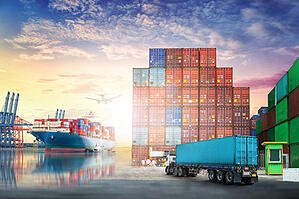Contract Manufacturing in Vietnam Increases Profitability: Spartronics White Paper
SOURCE: Spartronics White Paper
OEMs can Lower Labor Costs, Improve Quality, and Protect IP with the Right Partner
Vietnam has emerged as a leader for outsourced manufacturing among southeast Asian nations due to its exceptional cost competitiveness and consistent high quality. Vietnam’s location — adjacent to established supply chains across the border it shares with China — provides original equipment manufacturers (OEMs) with alternative sourcing as the costs of doing business in China escalate. Hourly labor rates in Vietnam are significantly lower than other nearby countries; and the nation has implemented strict laws and regulations to protect the intellectual property of foreign companies. The marketplace and political conditions together have enabled Vietnam to sustain the highest economic growth rate in the world since 2000. Understanding Vietnam’s unique financial advantages can help OEMs that outsource manufacturing to achieve a lower total cost of ownership that fuels higher profits and growth.
VIETNAM EMERGES AS A CONTRACT MANUFACTURING OPTION
The inflation of labor costs in China combined with the impacts of the recent trade war between the United States and China are prompting OEMs to look for an alternative market in which they can locate production.
This creates an opportunity for which Vietnam is well positioned geographically, politically and economically. U.S. companies are recognizing that opportunity, particularly those that partner with contract manufacturers (CMs) to make electromechanical devices for commercial aerospace, defense, space, life sciences, medical devices, industrial and semi-cap applications. Their urgent need to develop alternative supply chains is driving an accelerating shift of manufacturing from China to Vietnam.
Vietnam’s next-door proximity to China makes it an ideal alternative location for OEMs that intend to diversify their supply chains. The countries share a border, which simplifies ground transportation compared to locations in other nearby nations, such as Thailand and Malaysia. The main manufacturing region in Vietnam, near Ho Chi Minh City, is less than two hours from major ports that provide access to international shipping routes.
Vietnam has followed an export-led growth model, combining trade liberalization and foreign direct investment (FDI) promotion to spur exports.
Beginning in 1986, the government of the Socialist Republic of Vietnam moved from a centrally planned, agrarian economy to a more open, free market system. Internal restructuring and decades of reforms have paid off in remarkable economic growth, development and competitiveness. Since 2000, Vietnam has had the highest economic growth rate in the world. The nation joined the World Trade Organization in 2007, which helped normalize Western trade relations.
By heavily investing in infrastructure such as highways and seaports, Vietnam is providing an efficient business environment for OEMs and contract manufacturers. From 2012 to 2016, Vietnam’s infrastructure spending growth was among the fastest in southeast Asia at 11.5 percent, nearly double its average gross domestic product (GDP) growth.
The result of this coordinated political and regulatory shift for the country is that all of its high-tech segments are growing, especially among foreign companies that have located production for commercial aerospace, medical and industrial devices.
Most telling about the transformation of Vietnam into a sought-after manufacturing center is this forecast by PwC’s “World in 2050” report, which expects Vietnam to be among the world’s top 20 economies within 30 years.
To continue reading about Vietnam’s growth, drivers behind their cost competitiveness and more, click here to download our White Paper: Contract Manufacturing in Vietnam Increases Profitability.
SOURCES
Harry Moser, “How Will China’s Labor Turmoil and Rising Wages Impact Reshoring?” Industry Week, May 14, 2014, https://www.industryweek.com/the-economy/ask-the-expert-reshoring/article/21962926/how-will-chinas-labor-turmoil-and-rising-wagesimpact-reshoring (accessed April 23, 2020).
The World Bank, “The World Bank in Vietnam,” October 18, 2019, https://www.worldbank.org/en/country/vietnam/overview (accessed April 23, 2020).
PWC, “Doing Business in Viet Nam,” 2019, https://www.pwc.com/vn/en/publications/2019/pwc-vietnam-dbg-2019.pdf (accessed April 21,2020).












